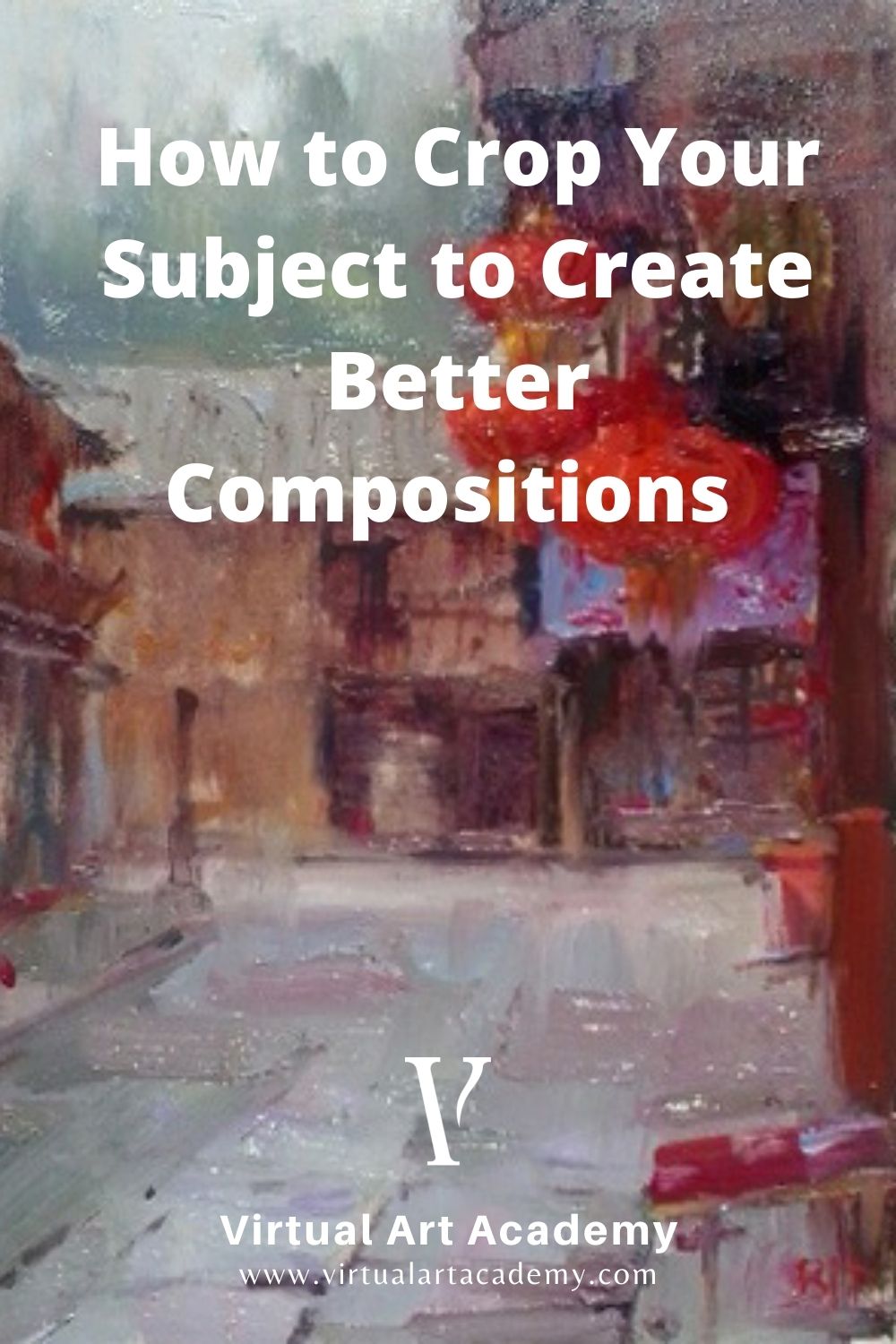
Why is cropping your subject important?
Cropping in art is a method of selecting parts of a scene in order to find an interesting composition. If you do not focus on the important parts of the subject, your viewers will have trouble understanding why you painted it, what drew you to it, and how you felt about what you were looking at. There are a couple of techniques you can use when cropping in art to select the part of the scene in front of you that attracted you to the subject matter in the first place.
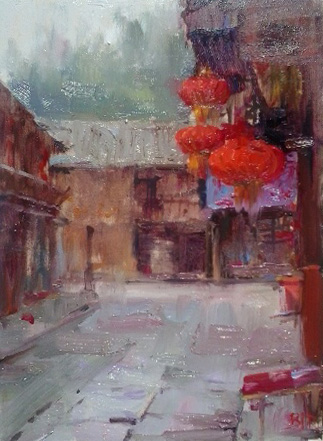
Technique #1: ask yourself the important questions
Many beginners are overwhelmed when they begin a painting, especially landscapes. They become so absorbed in painting everything they see in front of them, that they do not focus on what drew them to the scene in the first place. There is no point in painting every tree, mountain, blade of grass, flower, or figure in front of you. All you will end up with is a mass of confusion that has no impact on your viewers.
If you are more selective in what you choose to capture, you will end up with a more powerful painting. Sit quietly and look at the scene. When cropping in art, ask yourself some questions like these:
- do I want to capture the vastness of the view in front of me, or was it a small section such as a babbling brook that is the most interesting part?
- is it the whole building that attracted me, or was it the vine growing up the side, or the rusty section of roof?
- am I trying to capture the whole background, or just the figure sitting on the grass/park bench/in the doorway?
- was it the sunlight on all the trees and hills, or was it a patch of sun illuminating something in the foreground?
- do you want to paint the whole sky, or the most interesting set of storm clouds?
Until you can verbalize your main subject, then there is no point trying to make any preliminary sketches, or worse spend time on a full painting. Once you have narrowed down your subject, then consider which parts you are going to leave out, and which ones you are going to accentuate.
Technique #2: use a viewfinder to get a better cropping of your composition
A viewfinder is a valuable tool when cropping in art. It enables you to frame or crop your subject to achieve a better composition.
It is usually a square or a rectangle made out of card or plastic through which you look at an area in more detail. It is similar to a viewfinder on a camera with a zoom lens, in that you use your physical viewfinder to zoom in and out of a scene. To do that, hold it far away from you, then squint your eyes. This will help you use the principle of cropping in art to find a good arrangement or composition of shapes and values. Zooming in on a scene also simplifies the scene in front of you.
What kind of viewfinders are available for cropping a composition?
Use a viewfinder when cropping in art to help you find a good composition. There a several different types you can use.
Fixed frame
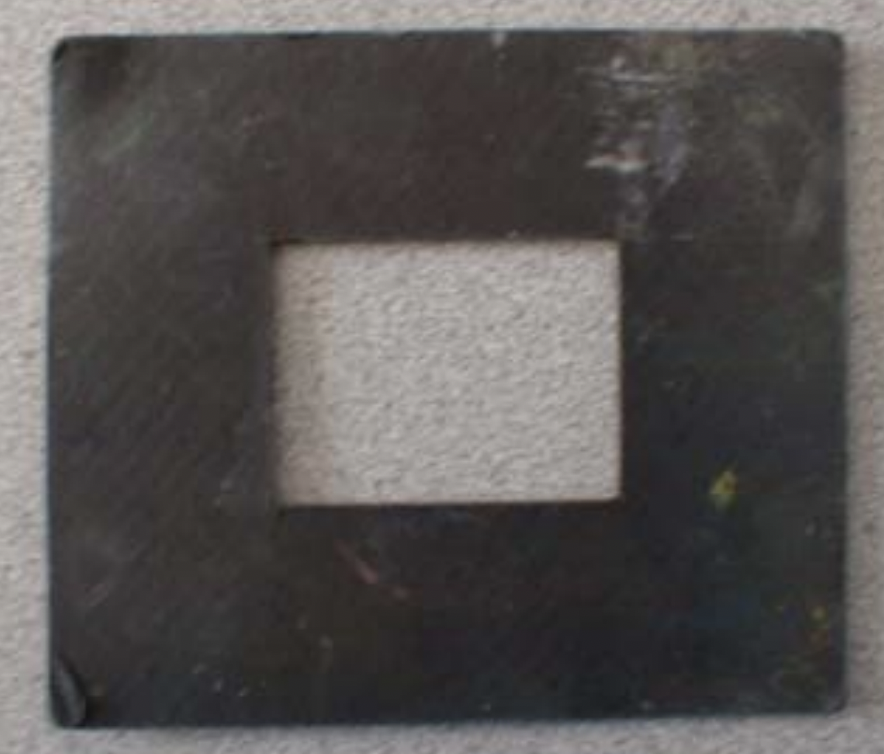
You can make these yourself from a piece of cardboard, poster board, or card stock. All you have to do is cut a rectangle out of your material, then cut a rectangle in the middle in the ratio to the support you are going to paint on. The outer rectangle removes any distraction from the scene and allows you to focus on what is important.
Create a different viewfinder for each of the different ratio size panels you use. For example, a ¾ ratio viewfinder is good for 6x8in (15x20cm), 9x12in (23x30cm), and 12x16in (30x40cm) panels. A 4/5 ratio viewfinder is good for 8x10in (20x25cm) and 16x20in (40x50cm) panels.
Variable frame – card
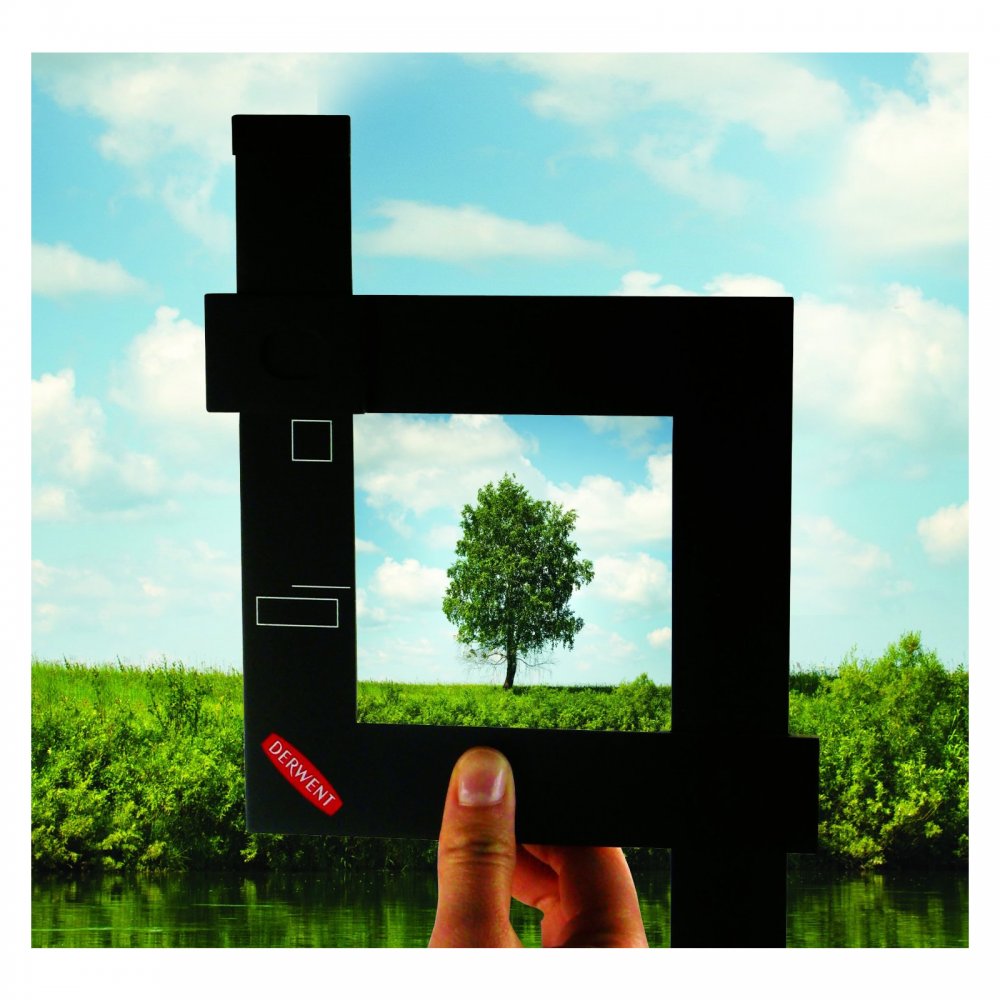
You can make, or buy, a frame that will work with canvases that have different aspect ratios by using two L-shaped pieces of card held together with paper clips. These can be useful for wider angle scenes in which you are including most of your field of vision in your composition. They can be used for unusual ratios, for example if you want to use a much wider support to capture a panoramic view, or a taller ratio for a figure painting.
Variable frame – plastic
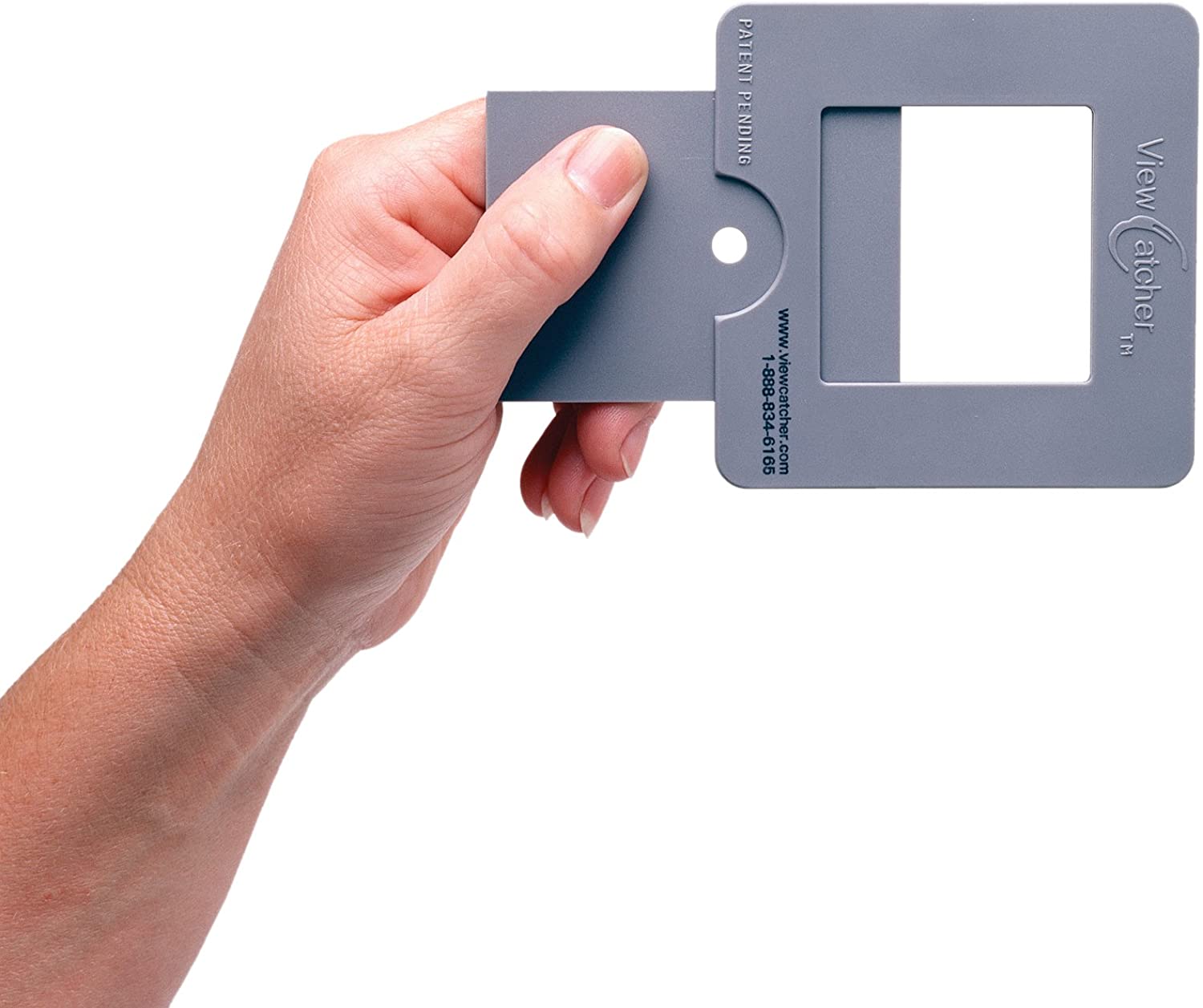
If you do not want to make your own viewfinder, there are some commercially produced ones that work just as well, such as the ViewCatcher. It is colored a #5 gray to help judge values, and has a small sight opening in the center that enables you to see values.
Simple frame
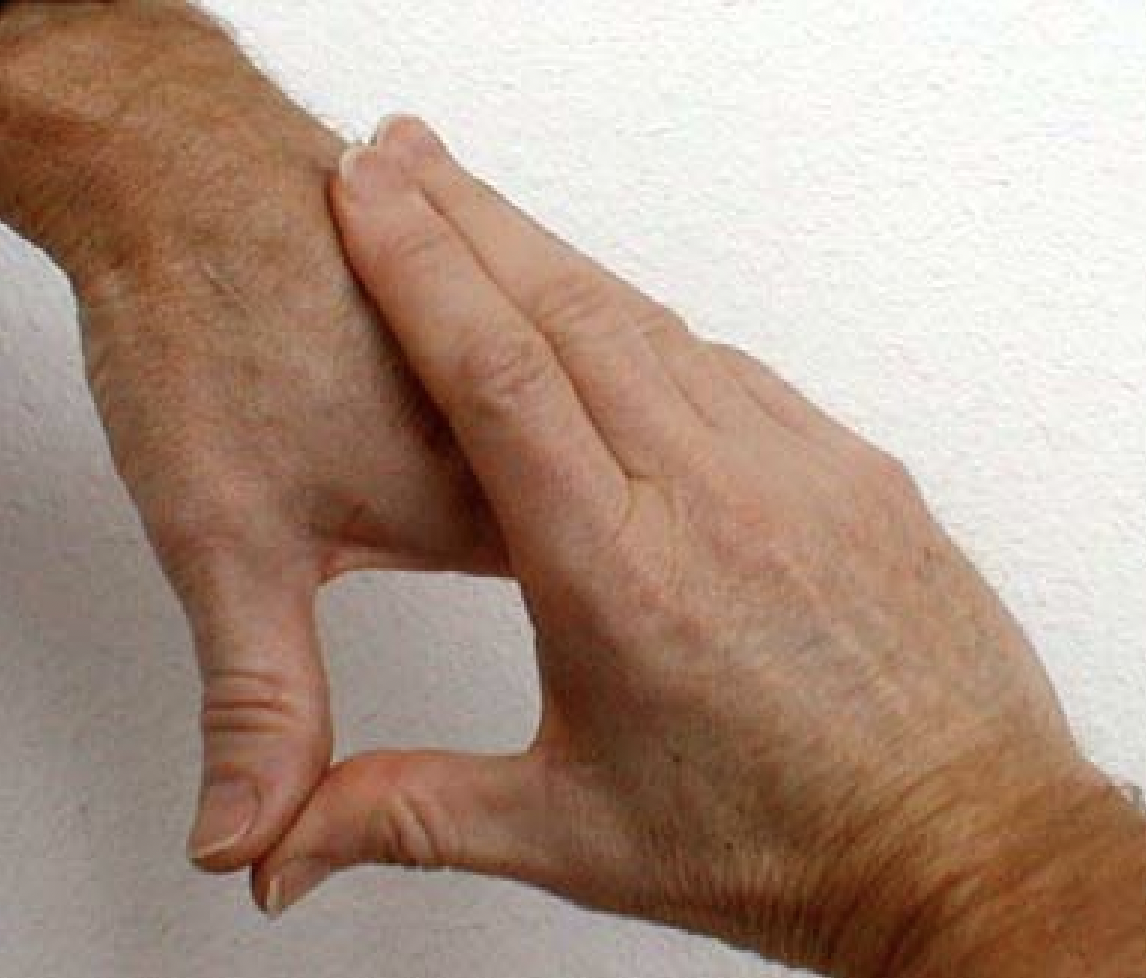
As a last resort, if you do not have your viewfinder with you, you can use your hands.
How to use a viewfinder to crop your subject
To get interesting ideas for compositions, use a viewfinder to select a part of the scene in front of you. There are two ways of looking at your scene and cropping in art:
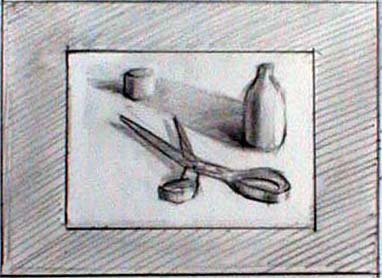
Distant cropping, in which you fit your complete subject within the frame.
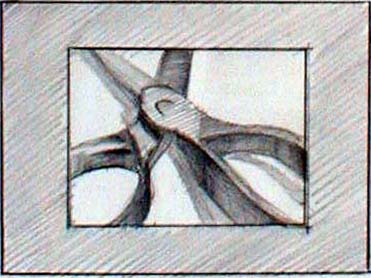
Close cropping, in which you bring the viewer close to your subject so that the frame of the viewer cuts right across the shapes of important objects in your picture.
Use the painting’s borders to create new and interesting positive and negative shapes, and enhance the abstract quality of your composition.
Two common problems when using a viewfinder for cropping in art
- Make sure that the aspect ratio of your compositional sketch matches the opening in your viewfinder.
- Also, ensure that the aspect ratio of your canvas matches the aspect ratio of your compositional sketch.
Cropping in art: The Crop and Float Rule
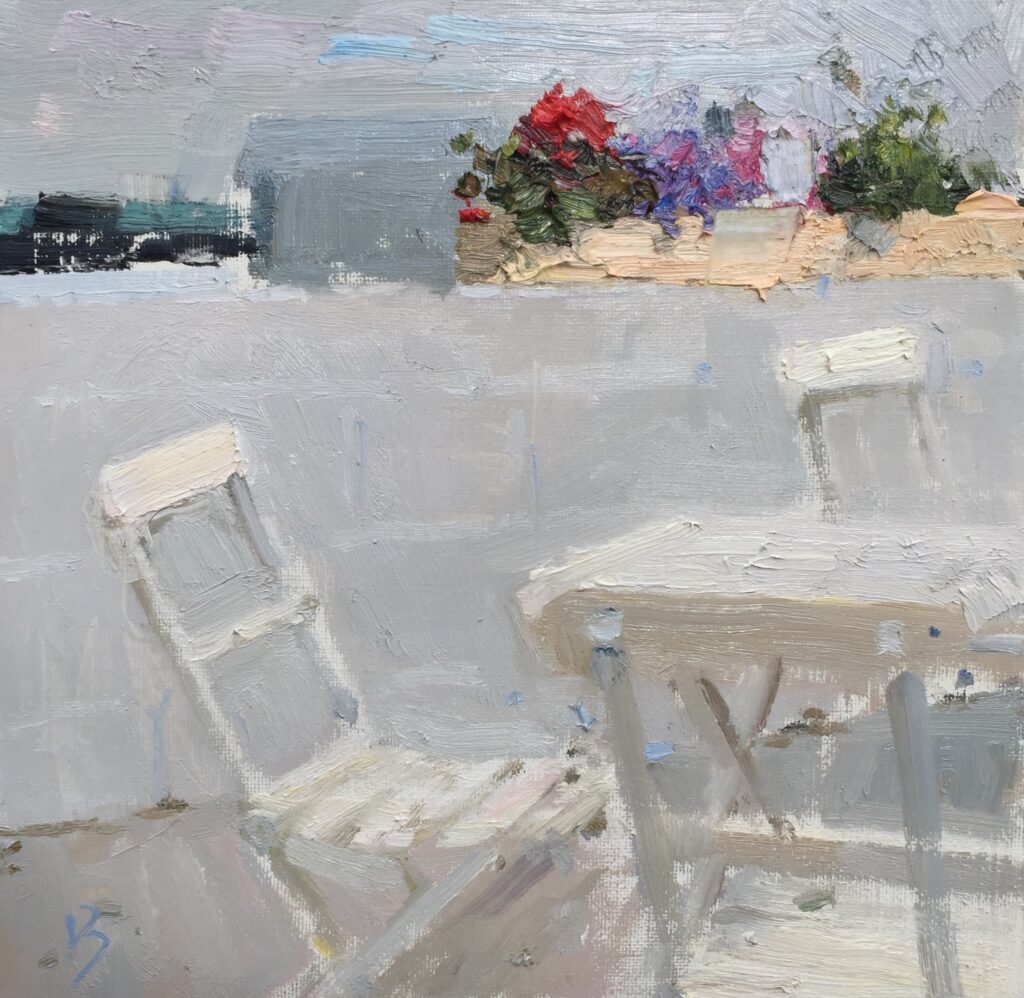
When you are cropping a figure, there is a special rule called ‘crop and float’. If you crop the top part of your subject, float the bottom half and vice versa.
Do this:
In this example just the bottom is cropped. The top of the figure is ‘floating’.
Avoid this:
In this example the figure has been cropped at both the top and the bottom. This creates a very unbalanced composition.
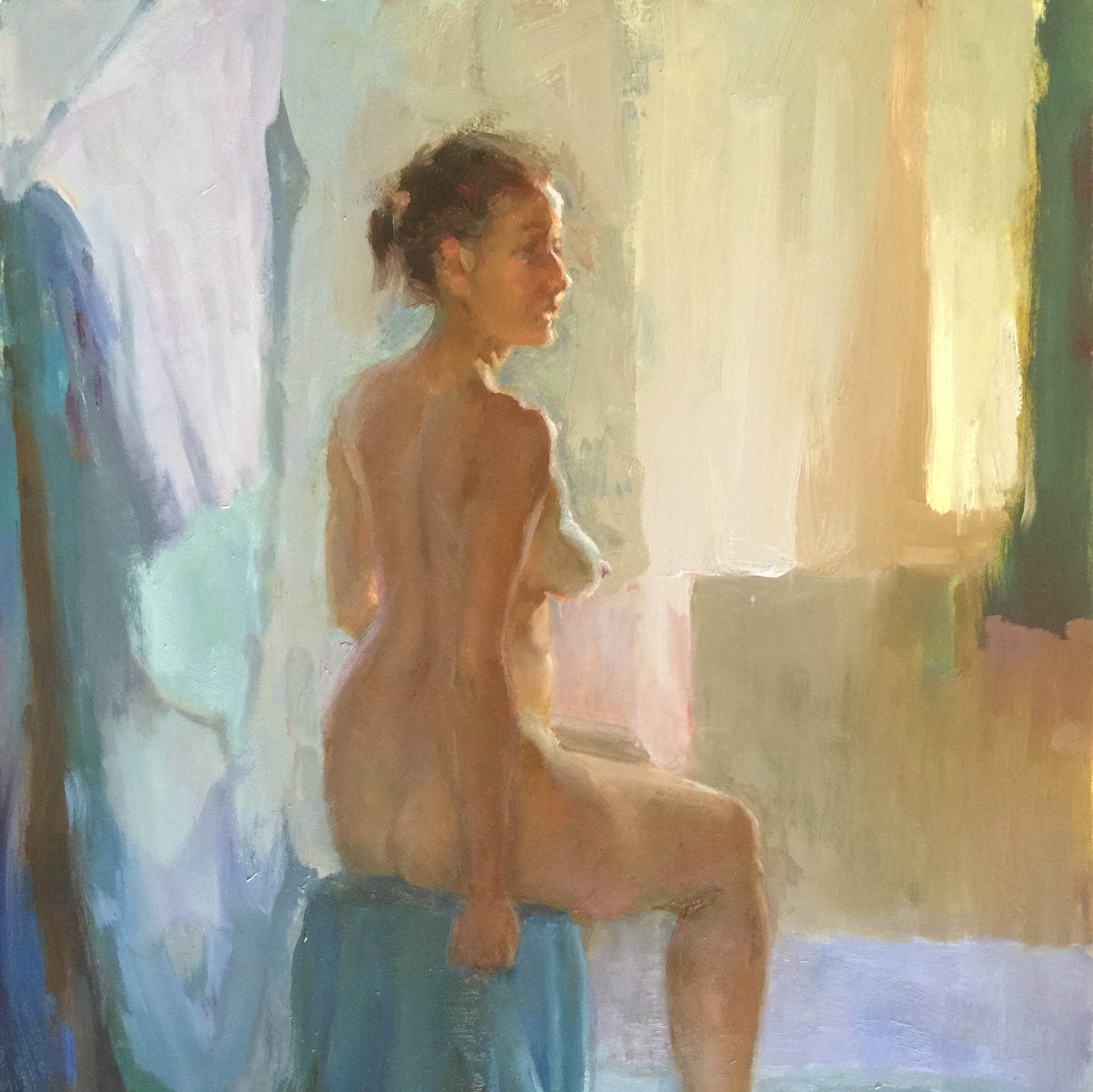
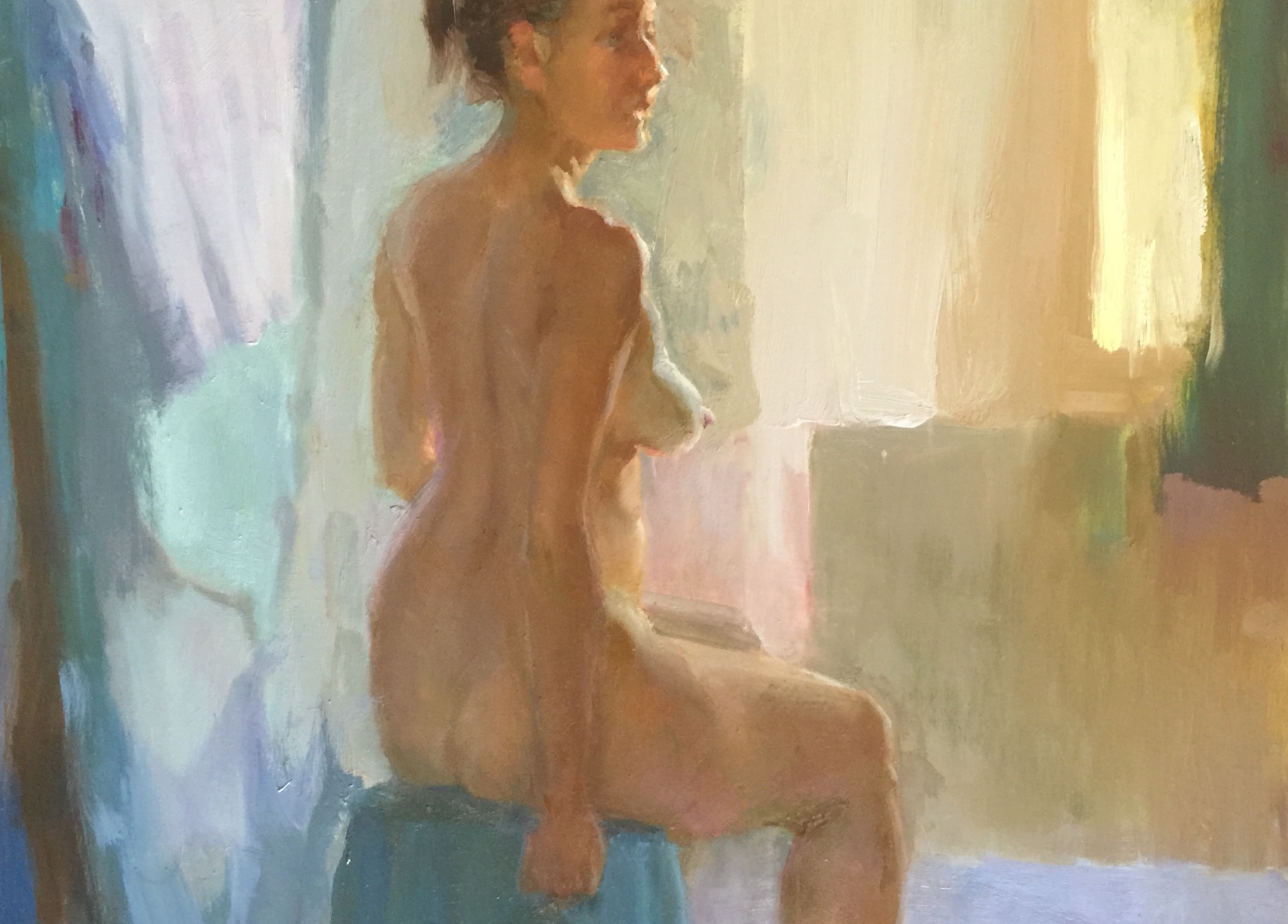
The history of cropping in art
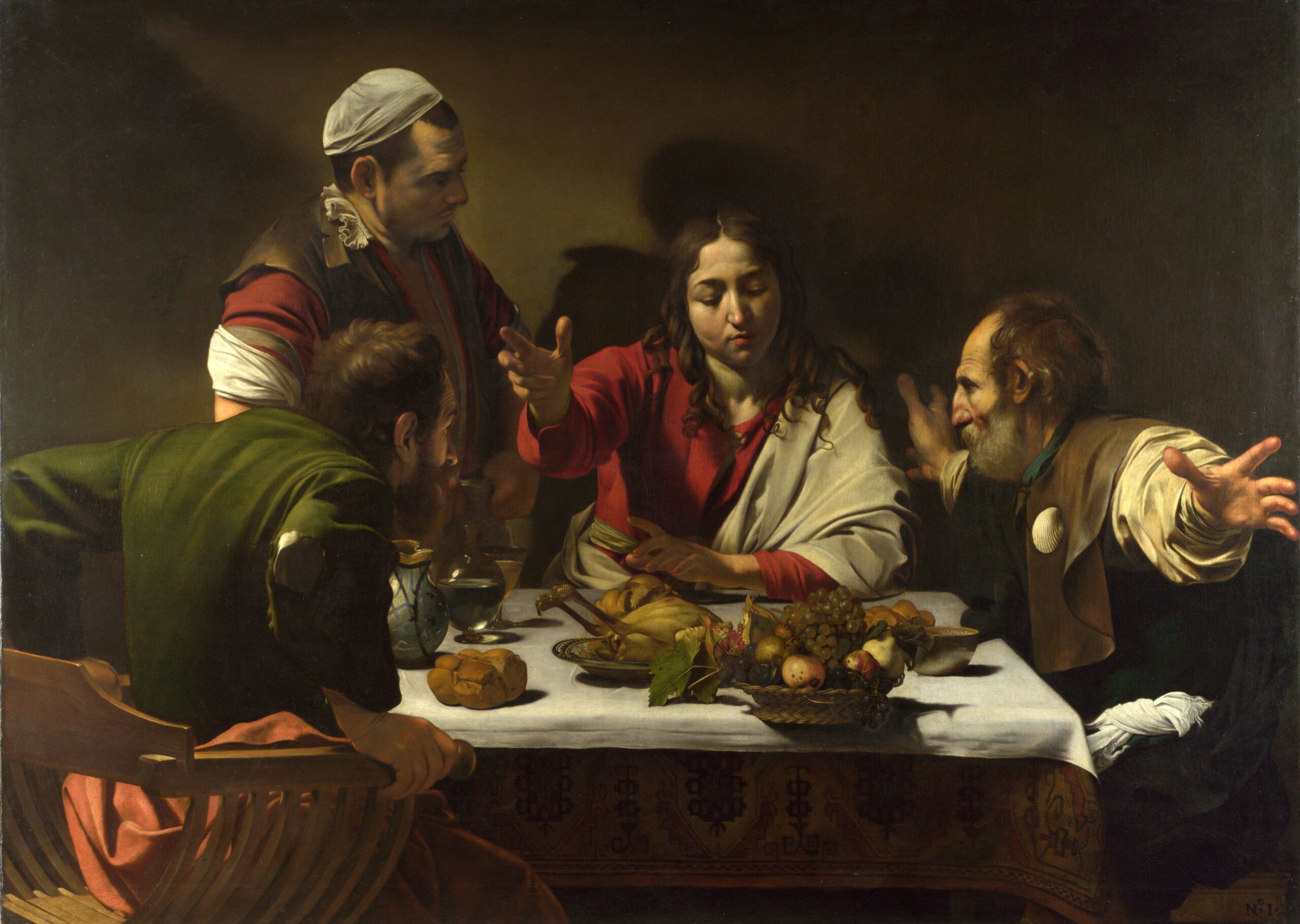
Originally, compositions were worked out through preparatory drawings before the artist put paint to canvas. During the Renaissance, artists began to crop parts of the figures in the left and right-hand edges of the canvas. One master of the cropping in art technique was Caravaggio, who used to create the sensation of dramatic nearness, and get the viewer more involved in the scene.
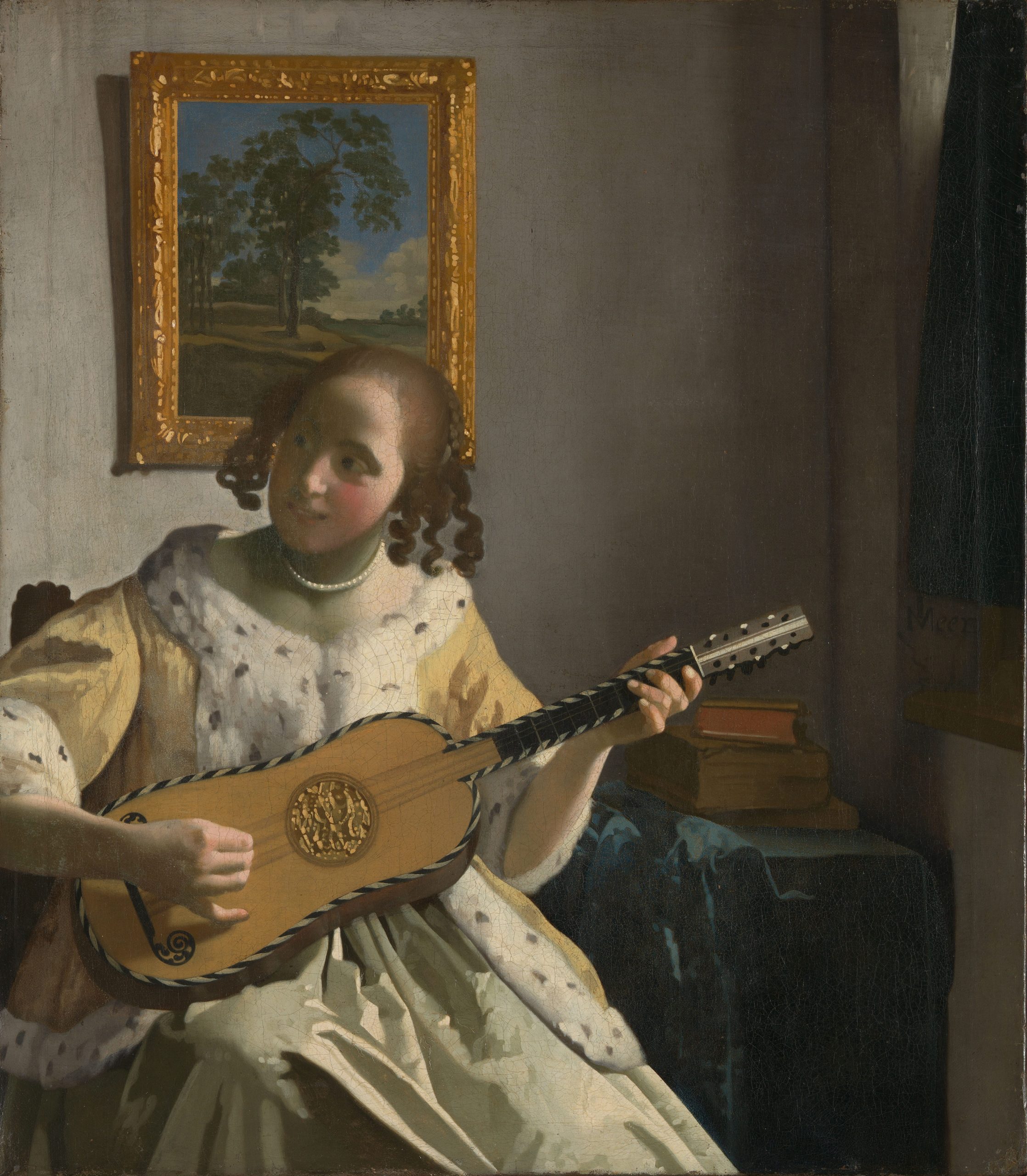
The use of the cropping in art appeared later in the Netherlands, specifically by artists who painted interiors such as Vermeer. He deliberately cropped both inanimate objects and figures in order to get the viewer more engaged in the subject. He drastically cropped the musician’s left-hand elbow in Guitar Player.
Vermeer was a true master of cropping in art. You see him doing this in all of his interior scenes.
For more information on Vermeer, see the wikipedia article on Vermeer.
Student Work
Our students on the online campus have been doing a great job at cropping in art. Here are some examples.
Example 1
Louise took a photo of Bowdon Island boats in landscape mode. She then cropped out the pier in the foreground to focus mainly on the big white boat in the foreground, and have a secondary focus of the house in the woods. She then cropped it again but in portrait mode which she like better as it contains foreground, the background mountains, and the reflections in the water.



Another student commented: “I like it because I found my eye ‘”wandering out of the house, down the jetty, and back over to the boat” (see my attempt to draw this, below). That diagonal line of the jetty pulled me from one corner of the image to the other side, and then back down. So I was there myself, in your image, which is a pleasant place to spend a Sunday afternoon.”
Example 2
Very often, students try to capture the whole landscape in front of them which can be difficult and frustrating, because it may not necessarily be the best composition for a painting.
Focus on what is important and perhaps what drew you to the scene in the first place, as Lara did here. Whilst on a trip through Arches National Park, Lara took this photo.

When she came to paint it, she realised there was too much information in the photo, so she tried cropping it in different ways and came up with this version. It shows a better dark/light contrast between the foreground rock formation and the mesa in the distance. It also has a much better notan structure, and a better balance, yet it still retains the idea of the majesty and vastness of the landscape.
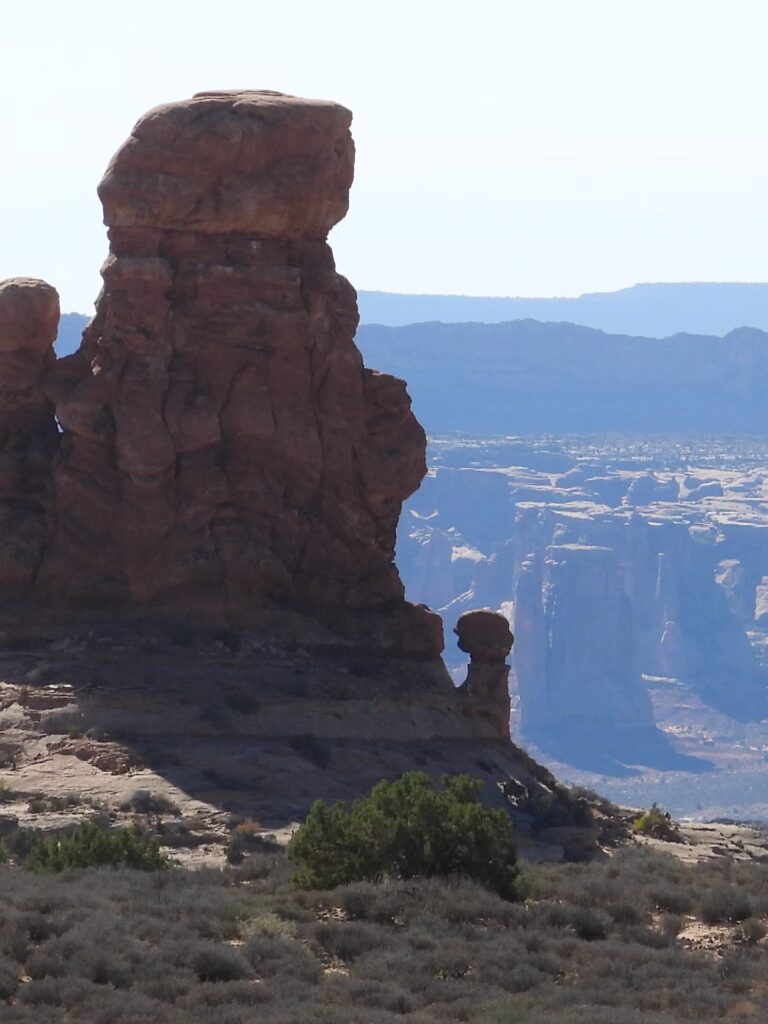
A beginner student was intrigued with the cropping process and tried one of her own. Which one do you think works best?
Now you try it. Next time you are painting either plein air or in the studio from a photograph, think carefully about what attracted you to the scene in the first place. Don’t forget to do your preliminary sketches and notan studies to zone in on the essence of the scene. It will not only save you time and paint, but help you come up with a much better composition.
Thank You
Thank you for taking the time to read this article. I hope you find it useful. If you would like to get free painting tips by email, please sign up for my free tips newsletter.
If you are interested in a structured approach for learning how to paint, take a look at my online painting classes.
Happy painting!
Barry John Raybould
Virtual Art Academy
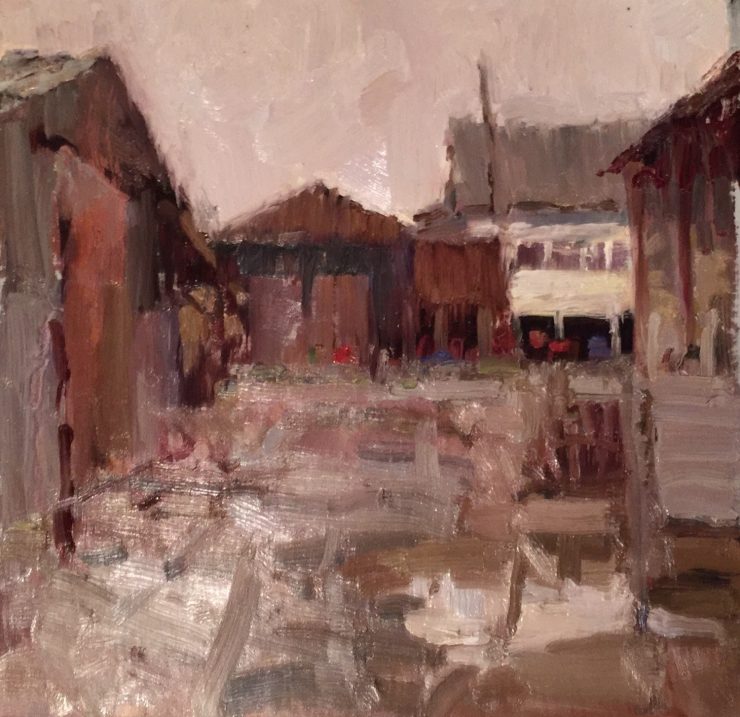


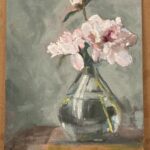





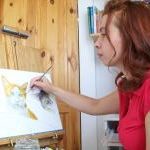


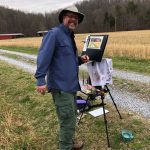













Add comment